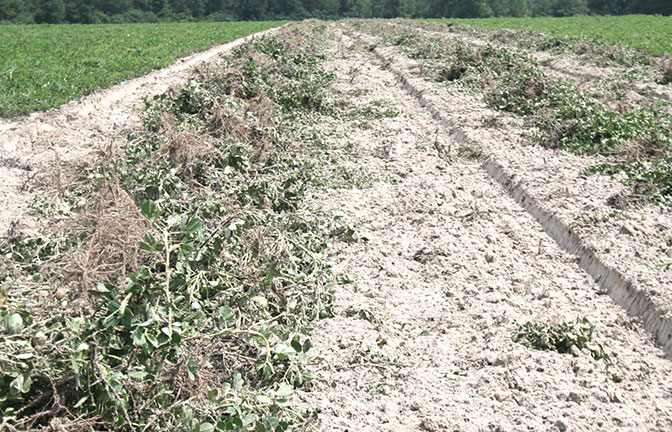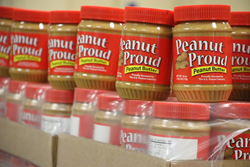
 Mark Abney’s message to Georgia peanut farmers is the same today as it was two years ago, when he was hired as the University of Georgia’s research and Cooperative Extension peanut entomologist: “We need to be scouting more of our peanuts.”
Mark Abney’s message to Georgia peanut farmers is the same today as it was two years ago, when he was hired as the University of Georgia’s research and Cooperative Extension peanut entomologist: “We need to be scouting more of our peanuts.”
The majority of Georgia’s peanut acreage, which is expected to be between 725,000 and 750,000 acres this year, is not scouted. Abney insists this is a major problem.
In a recent UGA Extension survey of peanut growers, only 25 percent of respondents reported monitoring their crop through a paid scout or consultant.
“This is discouraging, but it’s also an opportunity for UGA Extension to let growers know the benefits of regular scouting and, hopefully, increase the scouted acreage,” Abney said. “There are very few acres overall that are systematically scouted. That means we’re treating a lot of fields for insects that don’t need to be treated and we’re probably treating some fields that needed to be treated last week, this week.”
The lack of scouting means Georgia peanut farmers are spending unnecessary money and time treating diseases and pests and basing insecticide application decisions on incomplete or incorrect information, Abney said.
“That means many of our spray decisions are based on what our neighbors are doing or what somebody has seen in a different field,” Abney said. “Maybe you walk into a field and see a problem and say, ‘OK, I’m going to spray everything.’ We really stress hiring someone whose job it is to scout your peanuts.”
Farmers also tend to automatically spray an insecticide and a fungicide to save time. That can be costly, however, as insecticide sprays can cost more than $15 per acre.
“We’re not usually scouting for diseases because we know we have to spray. It’s easy for a grower to say, ‘I’ve got to spray a fungicide on this field anyway, so let me throw some insecticide in there for insurance.’ There are problems with that approach,” he said.
Also, ill-advised spraying can lead to the decline of natural predators, which could open up an even bigger problem.
“If you go into a cotton field, the fruit of the cotton is right there. If it’s getting eaten, you can see it; with peanuts, it is not that easy. The most serious pests of peanuts are usually below the ground; the caterpillars we see eating leaves are not nearly as important as the insects we do not see eating the pegs and pods below the ground,” Abney said.
Growers often use a broad-spectrum material like a pyrethroid, he said, because of its low cost. But these chemicals can wipe out natural enemies and lead to more pest problems.
Some of the insects that Georgia peanut farmers are most wary of are lesser cornstalk borers and burrower bugs. Both can wreak havoc in peanut fields if left untreated. Abney reminds growers that just because their neighbor’s peanuts may be infested, doesn’t mean their crop is, too.
“The single, most important thing that we can change in Georgia to help us with insect management is to scout more acres,” Abney said.
Georgia is the country’s largest producer of peanuts. According to the UGA Center for Agribusiness and Economic Development, Georgia generated $507.4 million in farm gate value for peanuts in 2013.
(Clint Thompson is a news editor with the University of Georgia College of Agricultural and Environmental Sciences based in Tifton.)







Be the first to comment